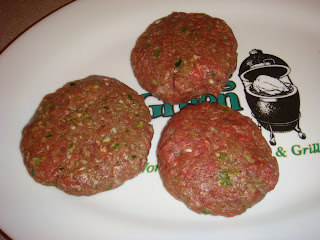 Pizza on the Big Green Egg is as close to brick oven pizza as you can get without the brick oven. This recipe utilizes store bought ingredients and doesn’t require you to prepare pizza sauce and with NO LOSS OF FLAVOR OR ENJOYMENT. Give it a spin!
Pizza on the Big Green Egg is as close to brick oven pizza as you can get without the brick oven. This recipe utilizes store bought ingredients and doesn’t require you to prepare pizza sauce and with NO LOSS OF FLAVOR OR ENJOYMENT. Give it a spin!Ingredients
2 Chicken Breasts – Boneless, Skinless
1 12 “ Boboli Pizza Crust Regular not Thin
1 Pkg. Boboli Pizza Sauce (1/2 cup)

2 Cups Mozzarella Cheese – Shredded
1 Cup Colby-Jack Cheese – Shredded
Shaker Shredded Parmesan Cheese Kraft
½ White Onion
¾ Large Green Pepper
½ cup Sliced Olives with Pimentos
Olive Oil
4 cloves Garlic
Preparation and Cooking Directions1) Remove Grill and Preheat and stabilize Big Green Egg to 400 degrees.
2) Insert Diverter rack and stabilize temperature.
3) Slice VERY thin all vegetables and set aside (use a ceramic slicer to get them paper thin)
4) Slice Chicken breasts into quarters and brown in Olive Oil
 and garlic until 95% done (juices will be running)
and garlic until 95% done (juices will be running)5) Remove from heat and dice, set aside.
6) Place Boboli Crust on a BGE Pizza Stone
7) Rub Olive Oil on crust then spread Boboli Pizza Sauce evenly
8) Add 1 cup of Mozzarella Cheese, Chicken and the Colby Jack Cheese
9) Add the remaining vegetables and cover with remaining Mozzarella Cheese

10) Sprinkle Parmesan Cheese (to taste).
11) Place in Big Green Egg, Close Cover and cook for 23-25 minutes and DO NOT PEEK!
12) Open BGE, slice with pizza cutter right on the Pizza Stone and serve directly to plates.










